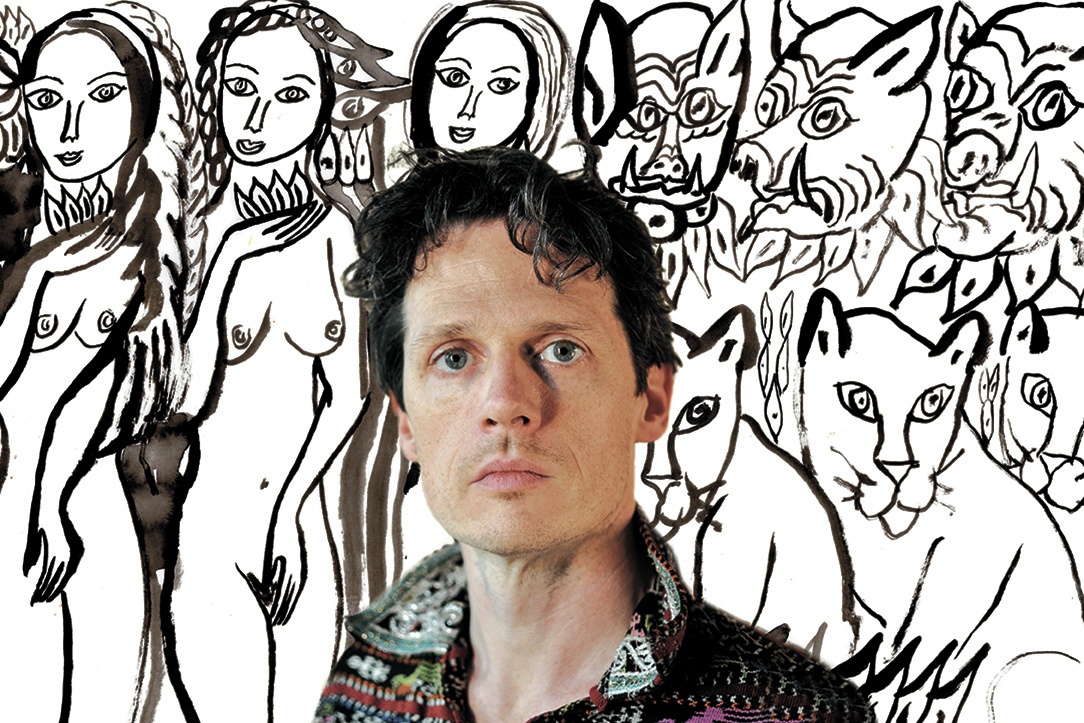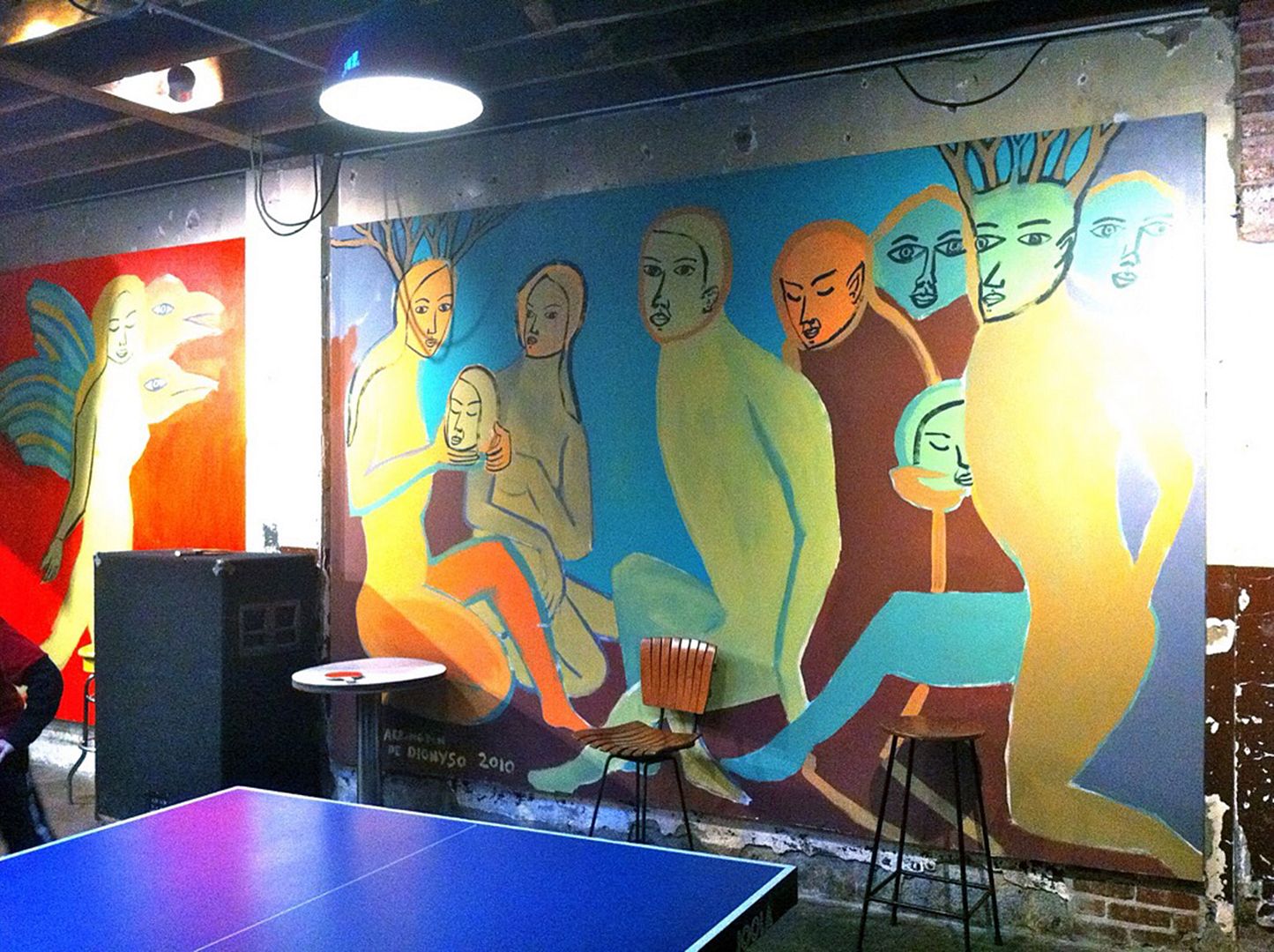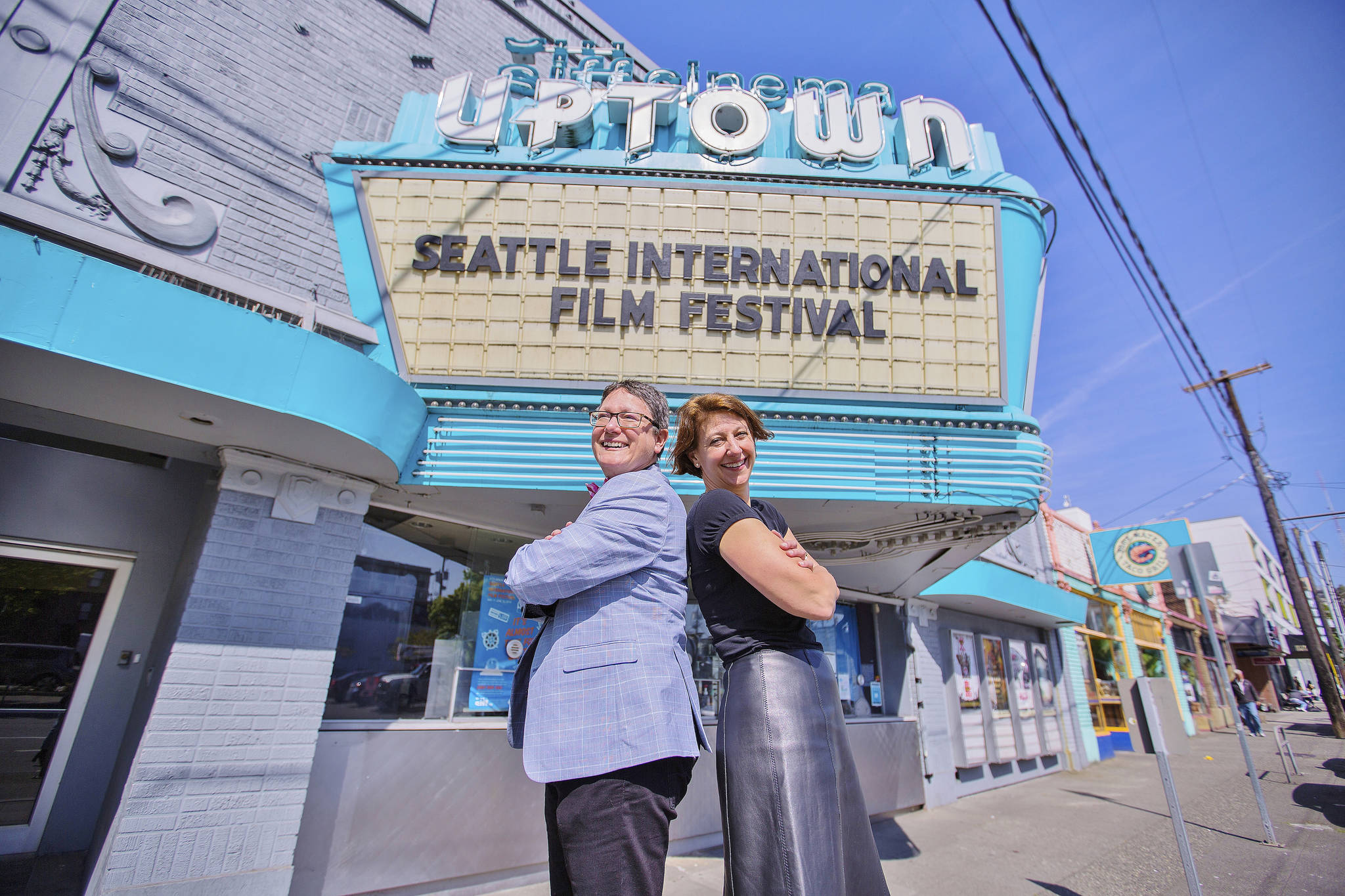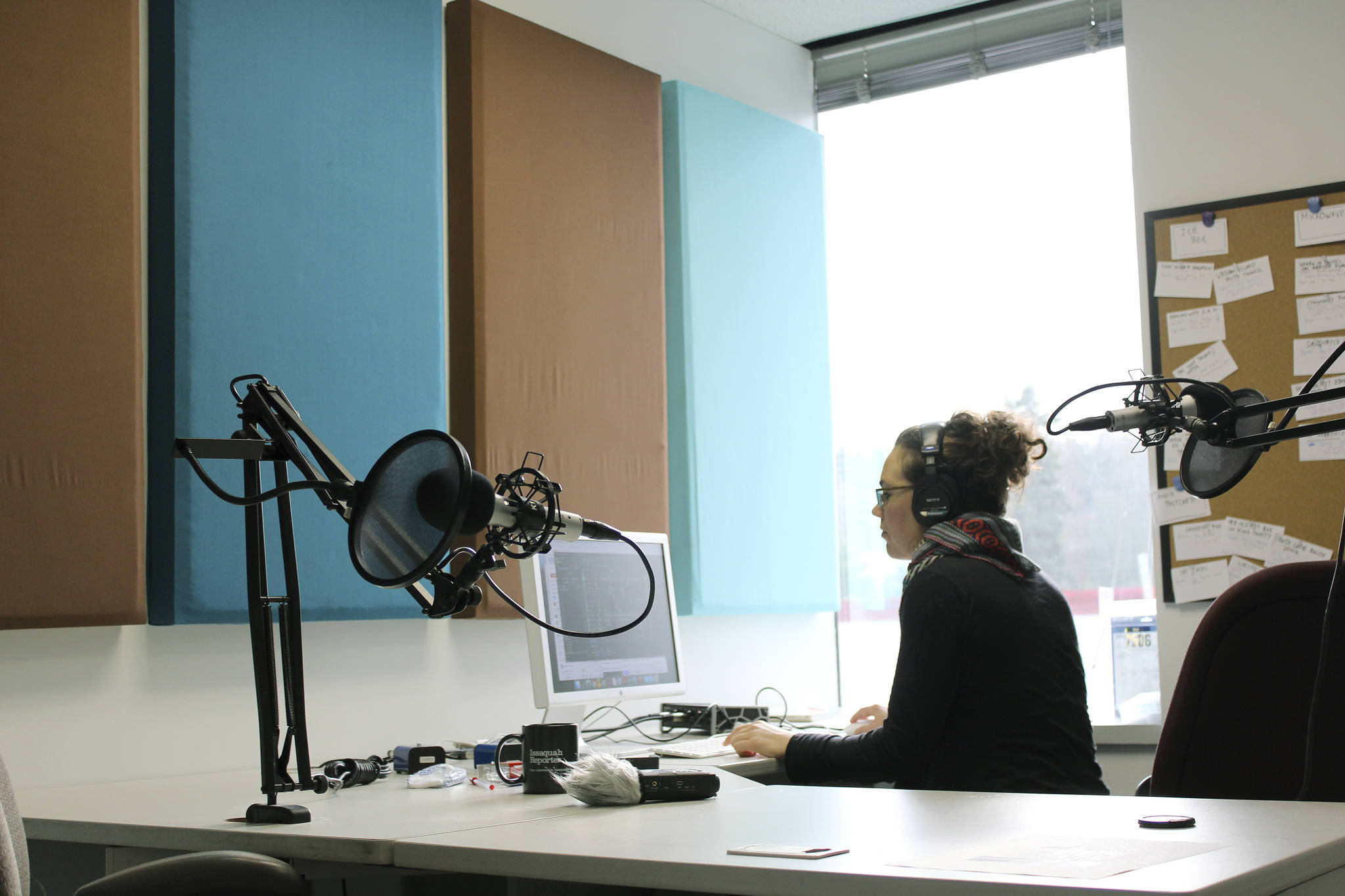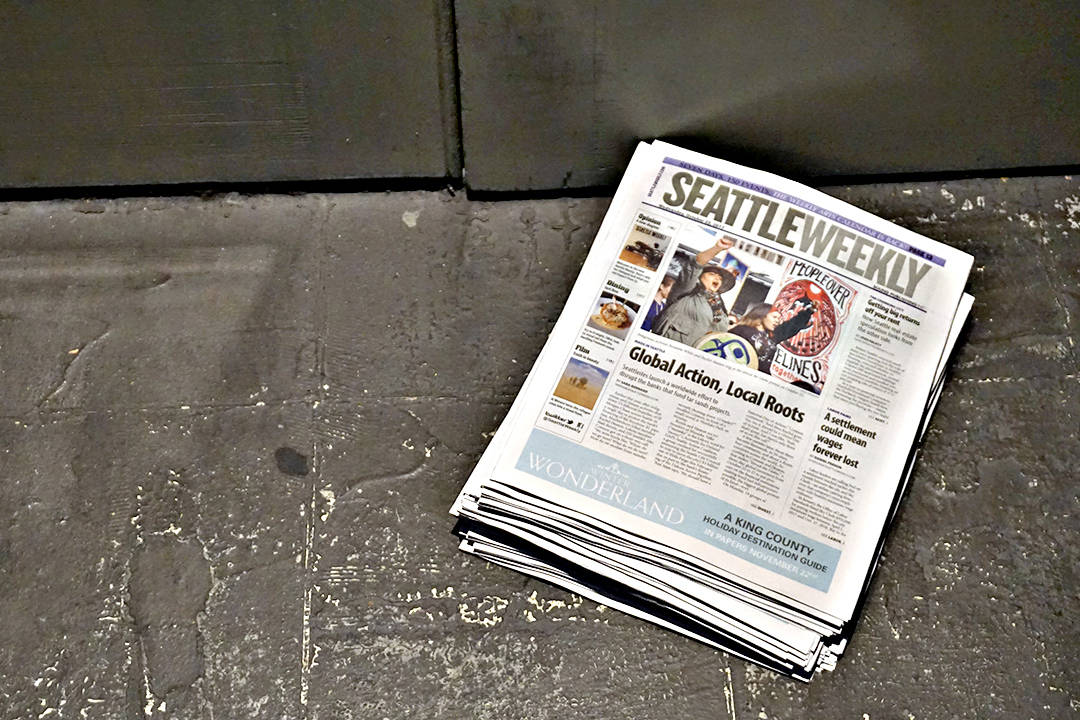A few days after the election, strange posters began appearing around Olympia. There is nothing particularly startling about this fact: As home to a historic underground music and arts culture, as well as The Evergreen State College, the Washington state capital is used to its fair share of weird public-facing art.
The inspiration for this particular image was a classic painting, Saturn Devouring One of His Sons, a dark and stirring work from the early 19th century by Spanish painter Francisco Goya. But the version that appeared in Olympia’s coffee shops and bookstores was slightly different. The image was more brightly rendered, its brushstrokes thicker, and atop the head of the god, munching on the body of his offspring, was a familiar blond mop. Here Goya’s disquieting commentary on the corruptibility of power, created in the wake of a Napoleonic invasion and under the thumb of a despotic Spanish monarchy, was recast for the modern political era with president-elect Donald Trump as Saturn. In addition to posting it around town and on campus, the artist responsible, Arrington de Dionyso, posted it to his Instagram and invited anyone who wanted to print out their own posters to get in touch. He says he eventually sent print-ready files of the image to four of his fans to distribute around the country.
It was a clever artistic statement and a work of protest art that was appropriate for de Dionyso, an outsider artist who shares with Goya a fascination with the human body and a willingness to explore the sexual, the spiritual, and the grotesque through its figures.
For one growing audience, though, the allusion to a classic work was lost.
Since a week or so prior to the election, de Dionyso had been gaining attention from a number of amateur investigators working under the banner of Pizzagate.
Their investigation started late in the presidential campaign with the release of a trove of e-mails stolen from Hillary Clinton’s campaign chair, John Podesta. Within these e-mails conspiracy-minded readers believed they had found heavily coded evidence of evil happenings in the basement of a Washington, D.C., pizza parlor. Further research revealed what they viewed as sinister symbols and disturbing coincidences that they believed firmly implicated Podesta, Clinton, and others in a satanic child-trafficking ring. They documented their findings on Reddit and 4chan web forums, as well as through Twitter, which members of the white nationalist alt-right movement used to promote and perpetuate the theory.
In their view, “cheese pizza” stands for “child porn,” an illustration of ping-pong paddles looks a little too much like the symbol for adults who lust after little girls, and the artwork of Arrington de Dionyso is a vessel for Satanism.
These conspiracy theorists had become aware of de Dionyso’s artwork because of murals the artist had painted at Comet Ping Pong, the alleged site of the alleged misdeeds. Those murals were, in keeping with de Dionyso’s other work, focused on collections of human figures, some with antlers, some holding disembodied heads. The imagery was strange enough to the theorists that they began delving deeper into the artist’s portfolio, finding work that contained even more mythological symbolism and, to their horror, some that depicted sexual intercourse between adults. So when those amateur investigators were faced with the homage to Goya, it was viewed not as a protest against the newly elected president, but as further confirmation of his guilt.
“There were some message-board posts I found from people who took it to be endorsing cannibalism,” the 42-year-old artist says now. “Maybe on Reddit or 4chan, but a lot of those have been wiped.”
On de Dionyso’s Instagram, the image struck up another conversation. “Wtf is wrong wit you fucks?” wrote one commenter, expanding his critique to include the entire oeuvre. “Everything about your whole page screams occult lucifer worship.” The commenter added later, “everybody sins[,] but when you start sacrificing innocent children to Lucifer and his fallen angels than your on a whole other level.”
In response, de Dionyso wrote, “I do not worship Lucifer and I have zero connection to any kind of sacrifice of anyone’s children. I think you may have [been] reading a website that is spreading some very serious lies… . Lots of people make ‘weird’ art, it doesn’t mean they actually do any of that stuff.”
It was another week before de Dionyso received his first, and so far only, death threat. On November 20, a Twitter user wrote that “The ‘artist’ is Arrington de Dionyso. I say we lock and load and pay this sick fuck a visit. #pizzagate”
De Dionyso reported the user and the threat was removed. Three days later, Reddit shuttered its Pizzagate subreddit, one forum where the conspiracy had been building. Multiple fact-checking sites and news outlets weighed in, roundly dismissing the accusations as false, and the District of Columbia Metropolitan Police Department also confirmed that Pizzagate was nothing more than a “fictitious conspiracy theory.” Comet Ping Pong, it turns out, doesn’t even have a basement. This did little to dissuade those who had been connecting the dots.
De Dionyso says he was disconcerted by the attention, but as he relayed the interactions to his social network, a sense of amusement accompanied his disquiet. The conspiracy theorists listened to his music on Bandcamp in droves, he wrote, though they never bought anything. At one point they dissected one of his songs. “I wish I could have received this level of scrutiny from the music press,” he wrote while sharing the post with his followers. The conspiracy theorists even created videos in which they scrolled through his social-media accounts, commenting on his artwork and photos of his friends, building it all into their theories.
“They went to a Myspace that I don’t even have the password for anymore,” he says. There they found photos from 2006 of de Dionyso with a woman he was dating at the time who had a passing resemblance to Chelsea Clinton. “So they were going on this whole long rant about, ‘Oh, and look! He’s got a connection with the Clinton family!’ And it’s like, it’s not even Chelsea Clinton, dude. It’s my girlfriend that I haven’t even spoken to in five years.”
Then, on the afternoon of December 4, a 28-year-old man named Edgar Maddison Welch walked through the doors of Comet Ping-Pong in search of answers. Pizzagate proponents had previously infiltrated the restaurant, but Welch was the first armed with an AR-15. Having driven from his home in Salisbury, N.C., he would later tell police that he was there to “self-investigate” claims he had read online. According to police reports, he pointed his gun at an employee; later fired his weapon, hitting no one; and then, after 45 minutes spent inside the business, reportedly searching for child sex slaves and hidden chambers, he dropped his weapon and surrendered to police.
“The intel on this wasn’t 100 percent,” he would later tell The New York Times.
Many of the conspiracy theorists weren’t convinced and immediately disregarded the “self-investigation” as a false flag operation.
For de Dionyso, it was too much. He decided he needed to change his approach.
The first time de Dionyso set foot in Comet Ping Pong was in 2008, when his band Malaikat dan Singa played an all-ages concert in the restaurant’s small back room, which doubled as a ping-pong play area. The pizza parlor, located in the tony Chevy Chase neighborhood of Northwest D.C., was opened two years earlier, but had only just begun hosting live music on a limited basis. The atmosphere, de Dionyso recalls, was ideal for his work.
“Comet Ping Pong is the best live-music venue in Washington, D.C., at least from my experience,” he says now. “The programming is really adventurous. They work really hard to promote their concerts and to take very good care of the musicians they work with. It’s one of the few places on the U.S. touring circuit where they give you a very generous meal. It’s a place that if you play there once, you’re gonna want to come back and play there again. For a few years after that, any time I was on the East Coast, I would try to book a show there.”
It was in spaces like Comet—all ages, unconventional, affordable—that de Dionyso formed his identity as an artist. As a teenager in Spokane, he spent his weekends at gallery-turned-venue 123 Arts, where he’d listen to whatever punk band happened to be on the bill that night. One show in particular, from Olympia’s Go Team, resonated with him. “I had never seen anything like it before,” he told me for the 2012 history of K Records, Love Rock Revolution. “They would take just one guitar riff and just repeat it over and over and over again, and the drumbeat was this bouncy drumbeat you could bounce to throughout the entire song. … It felt like this really intense shamanic ritual.”
De Dionyso walked away from that show with a K Records newsletter in hand and a road map for his future in his head. He began releasing his own music, strange compositions featuring guitar, saxophone, and bass clarinet, on his own record label. After high school, he moved to Olympia to attend Evergreen. A few years later, his band Old Time Relijun was signed to K Records, releasing its debut album, Uterus and Fire, in 1998. The music on the album is raw and, at times, strange—sometimes a clattering melange of percussion and buzzing, repetitive blues guitar backing a howling, distorted vocal that could bleed into throat singing; other times just an extended jaw-harp jam. On the cover are crude drawings exploring the visual themes that would persist throughout de Dionyso’s career, the kind of imagery Pizzagate theorists would point to as proof of his art’s sinister intent—nods to mythology, nude bodies, a horned saxophone player, a disembodied head. The album as a whole is an exercise in a kind of intentional weirdness—one with purpose, says de Dionyso.
“I am interested in creating these juxtapositions of mythic imagery in that they evoke this sense of story,” de Dionyso says. “You feel like it must be saying something, but I remove myself from saying what that is. I don’t like artistic imagery to be condescending. An image is made more powerful if it provokes a question. You have to study an image, and then you study your own reaction to it.”
De Dionyso was quickly exposed to the idea that some people might not understand his art. In a scathing and sophomoric review of the debut, a writer at Pitchfork stated that the album marked “the first time anyone’s ever recorded an ensemble of diarrhea-afflicted Down’s Syndrome chimpanzees taking a collective dump in someone’s garage.”
At music venues around the country, though, de Dionyso’s music and his expressive performance style found an audience, even as they evolved and became, in some ways, more challenging. One of those places was Comet Ping Pong, which invited de Dionyso back in 2010 to again perform as Malaikat dan Singa, a project that has de Dionyso reciting William Blake poetry in Indonesian over a churning trance-punk instrumental. That same year, de Dionyso says, after a conversation about his artwork, he was invited by the venue’s booker, Sasha Lord, to paint murals in the back room.
“I don’t remember if it was her idea or my idea,” he says, though a Comet Ping Pong representative says the murals were in fact de Dionyso’s idea. “She talked to the owner and got permission. They set aside a small stipend. It wasn’t what I would charge if I were doing a commercial job, but they took very good care of my needs while I was working and gave me a little bit of money. They very specifically said representations of the human figure cannot have any kind of depictions of genitalia or nipples. That’s a compromise for me, right, but that was totally cool.”
De Dionyso stayed up through the night painting his figures on the walls of the back room, creating a work of art larger than any he had ever made. “When I paint I never work with a plan,” he says. “So I just started to get the paint together, did some outlines of figures, and then I was like, ‘Well, what am I gonna do with these guys?’ Then I filled them in and it became what it is. I work from unconscious inspiration, so I didn’t know what it was gonna be before I painted it. And they were happy with it.”
De Dionyso says that the process of creating the large-scale work was pivotal to his development as an artist and helped propel his work forward. Perhaps as a result, de Dionyso’s profile has been growing. In early 2015, the Saint Laurent fashion house featured his work Dragons and Angels in Deep Conversation as a print for a backpack, shoes, and a coat. The collaboration was featured in The New York Times.
To the Pizzagate crowd, these dragons and angels are likely to further confirm the artist’s corruption. But these creatures serve a different purpose than the one his literal-minded critics might imagine, he says. “I’m drawn to the idea of using art as a gateway to exploring the imagination,” he says. “Both in this world of dreams and then beyond your personal dreams. Mythology in a global sense is the dream of humanity.”
Both the representative from Comet and de Dionyso say that the mural was painted over in 2011. Yet, though it has not existed for five years, the work has placed de Dionyso in the rare company of other artists who have come under fire during what de Dionyso is calling a “witch hunt.” Among them are D.C.-area musician Amanda Kleinman, a college counselor by day, whose band Heavy Breathing has also performed at Comet. As reported in The Washington Post, conspiracy theorists have publicized her address and sent threatening messages to her and her employer. At least one other Pacific Northwest band has been targeted by conspiracy theorists, says de Dionyso. The female lead singer has been subjected to accusations, insults, and physical threats simply for playing in a band with a provocative name and appearing on a Comet concert poster. A representative of the band—not being named at de Dionyso’s request—did not return a request for comment.
“I am probably the least directly traumatized by the things that are going on,” de Dionyso says, pointing to the sexist contours of the responses to the artists’ work. “The level of targeting directed toward these very, very talented and brilliant female performers was of much more violent nature than any I received, much more of a deluge.”
“When this kind of stuff is happening, they always say ‘Don’t feed the trolls’,” de Dionyso says. “They say, ‘Keep quiet about it; it’ll simmer down.’ But the thing with the guy bringing a gun into the restaurant was just so offensive and unimaginable.”
De Dionyso decided to post a statement on social media. “My work celebrates the joy of being human,” he wrote, in part, “the incredibly magical gift of being alive. In my music, my goal is to create safe environments where people can explore new ways of organizing expressive sound. In my visual artwork, I draw upon imagination, dreams, and mythology to depict Utopian worlds populated by tigers, serpents, birds, and other animals. In some of my artworks, like many famous artists who have gone before me, I creatively explore themes of a sexual nature.”
At a friend’s urging, he transformed his missive into a longer essay. On December 13 he posted it on Medium: “How I became a target of the alt-right.” “I’m sure this sounds ridiculous—and hilarious—but it isn’t,” he wrote. “It’s terrifying and it has taken over my life.”
“I know that the goal of the alt-right and their allies is to silence any dissenting opinions, like mine,” he went on to write. “I know they want me to respond by going into hiding, by taking down my art from the internet—and possibly by discontinuing making art altogether. I’m not going to do that. I’m not going to let them win.”
The essay quickly went viral, and soon de Dionyso’s social-media feeds were flooded—not with conspiracy-minded trolls, but with supporters.
“The outpouring of support has been enormous,” de Dionyso wrote in an e-mail a few weeks after he published his essay. “We who are engaged in fighting fascism must never forget: WE ARE THE MAJORITY. Most people do NOT want repression of any kind and oppose it in principle; this kind of targeted harassment can only be successful if it intimidates us into silence and isolation.”
De Dionyso says that as the support has increased, the harassment has decreased—even though new videos deriding his artwork continue to pop up online. “I think if we can maintain this kind of vocal support of people who might be victims of right-wing trolling, it very may well be a way to defeat it,” he says.
De Dionyso says he has seen significant gains in his social-media audience, including 2,000 new followers on Instagram, where he continues to post new artwork. Sales of his artwork have increased as well. And when de Dionyso sells a new work of art, he donates 50 percent of the sale to the water protectors protesting the Dakota Access Pipeline at Standing Rock, something he is happy to tell his new followers, no matter their intentions.
“Anyone who is stalking me can clearly see that all of their work to isolate me as an artist has only made me ‘popular’,” he says.
De Dionyso has also started a new musical project with a political bent called This Saxophone Kills Fascists, and is planning a spring tour of the East Coast. The Washington, D.C., date is yet to be announced, but it’s in the works.
mbaumgarten@seattleweekly.com
Photo of mural at Comet Ping Pong by Arrington de Dionyso (2010-11). Courtesy of the artist
